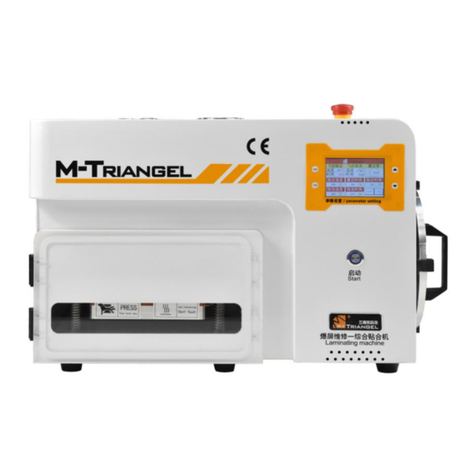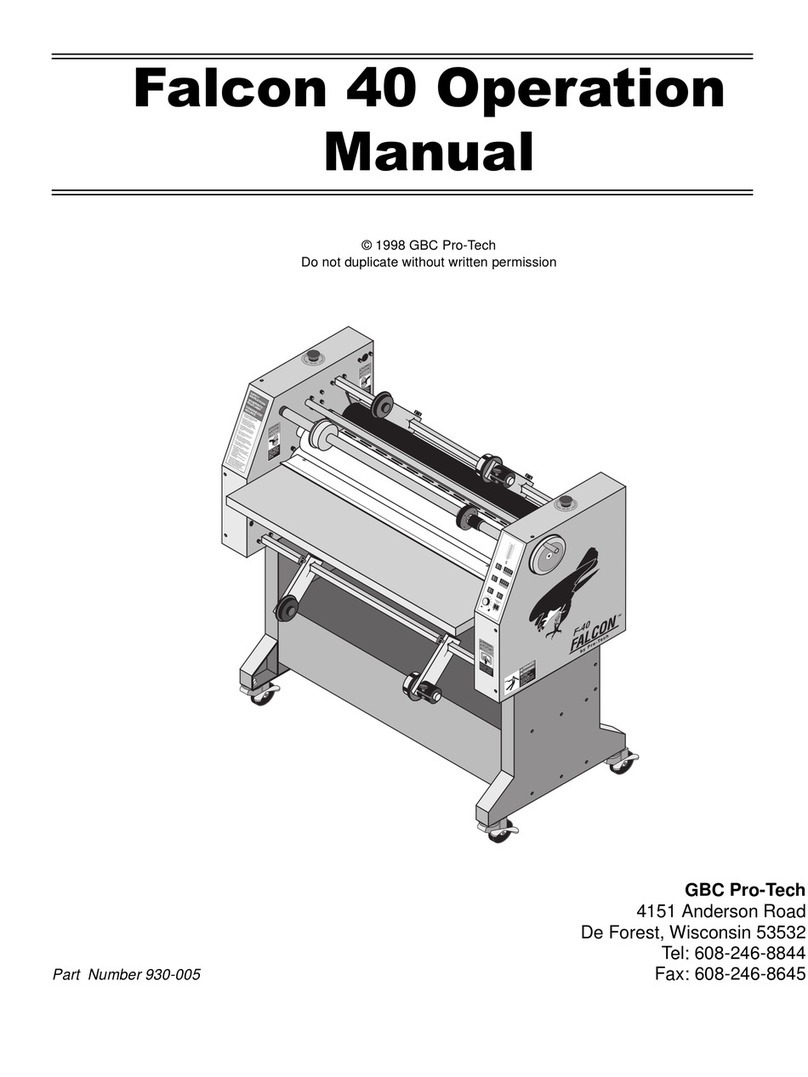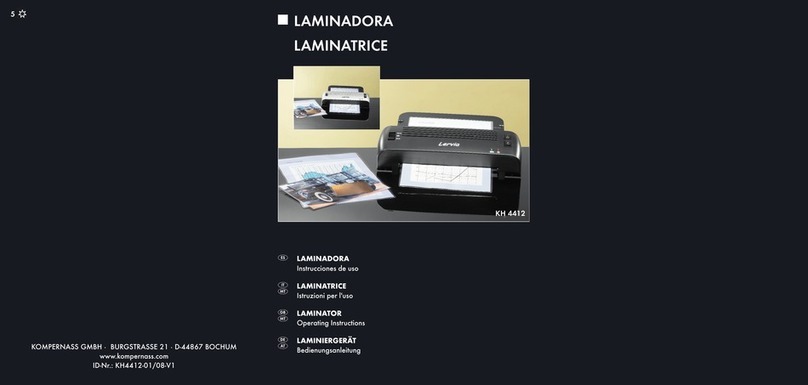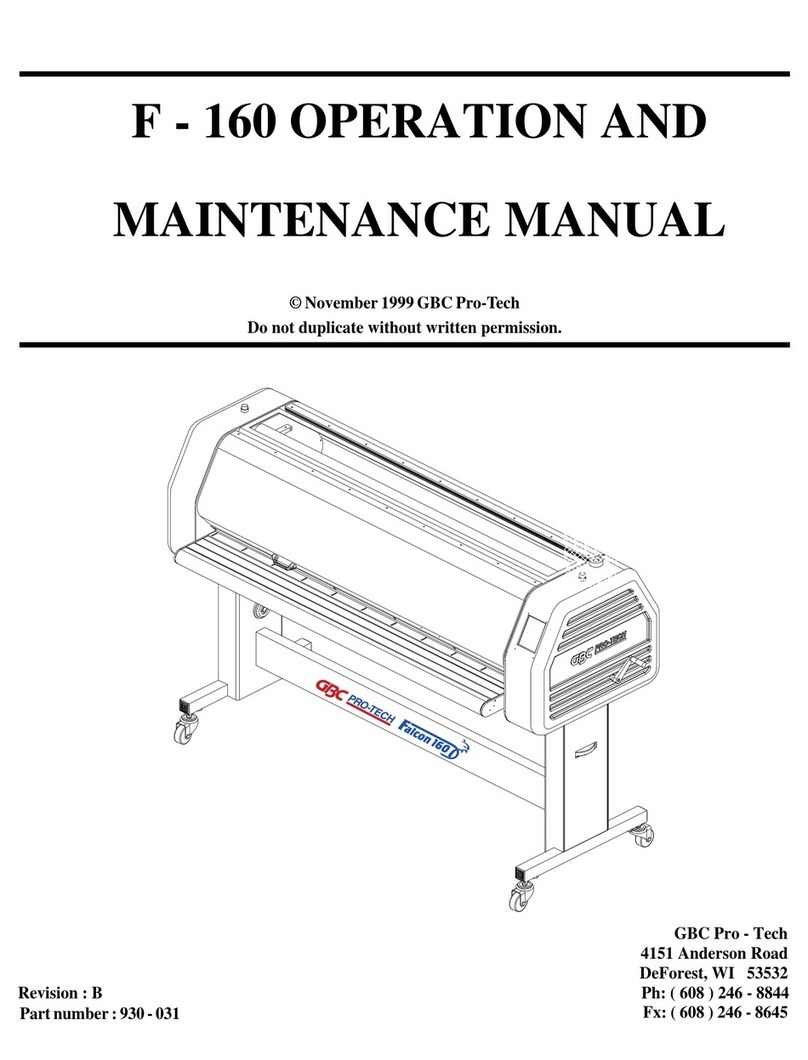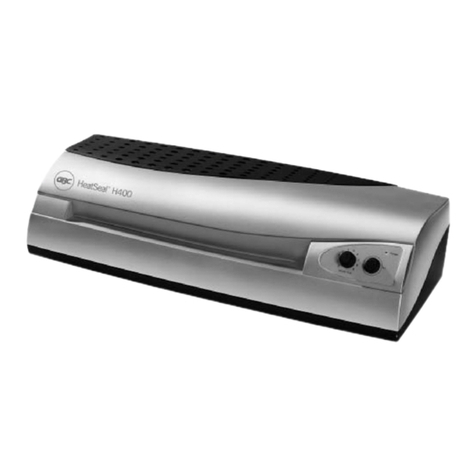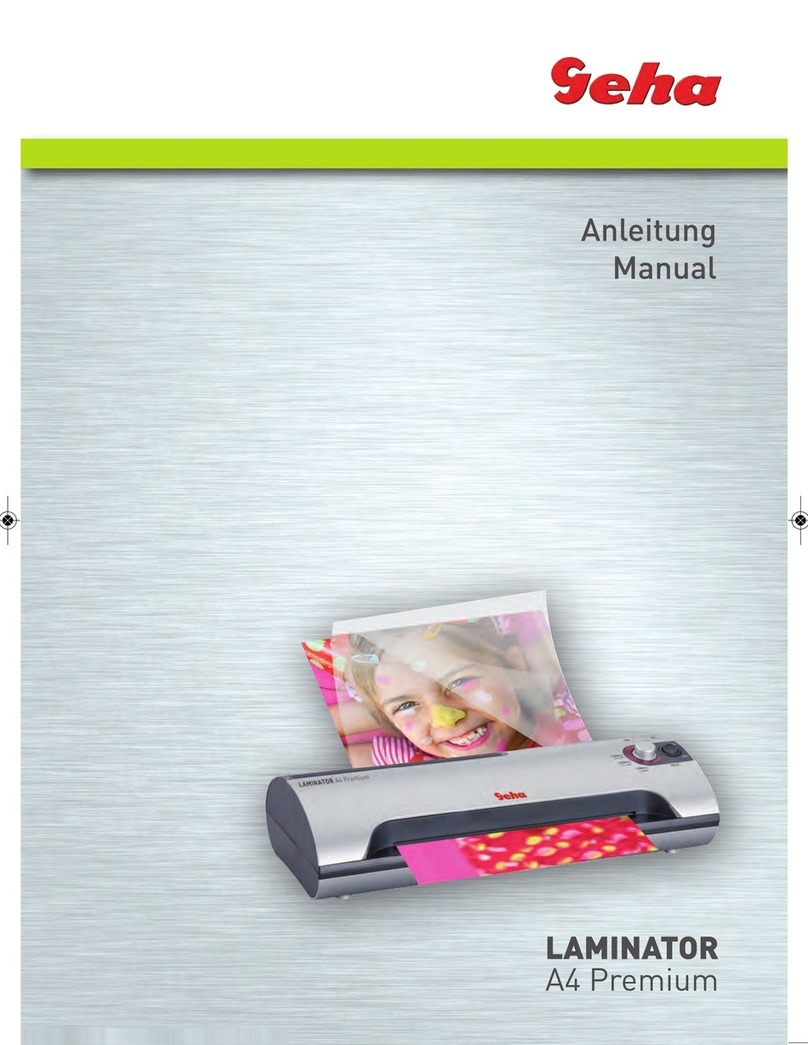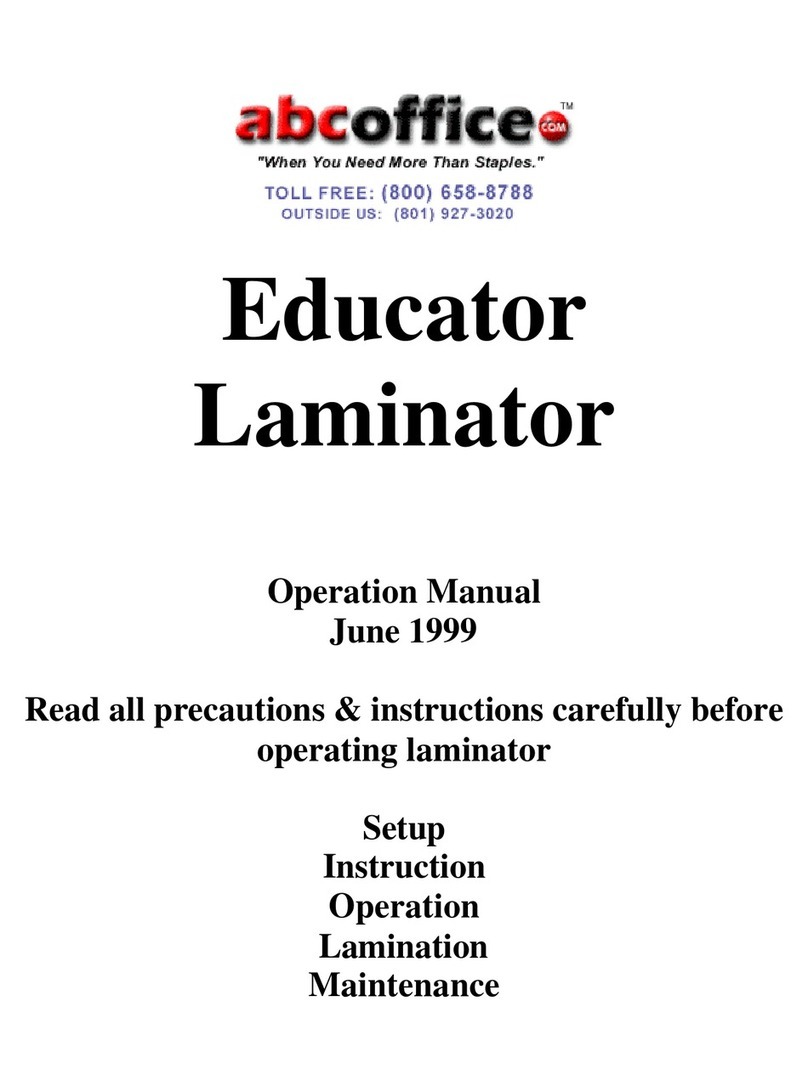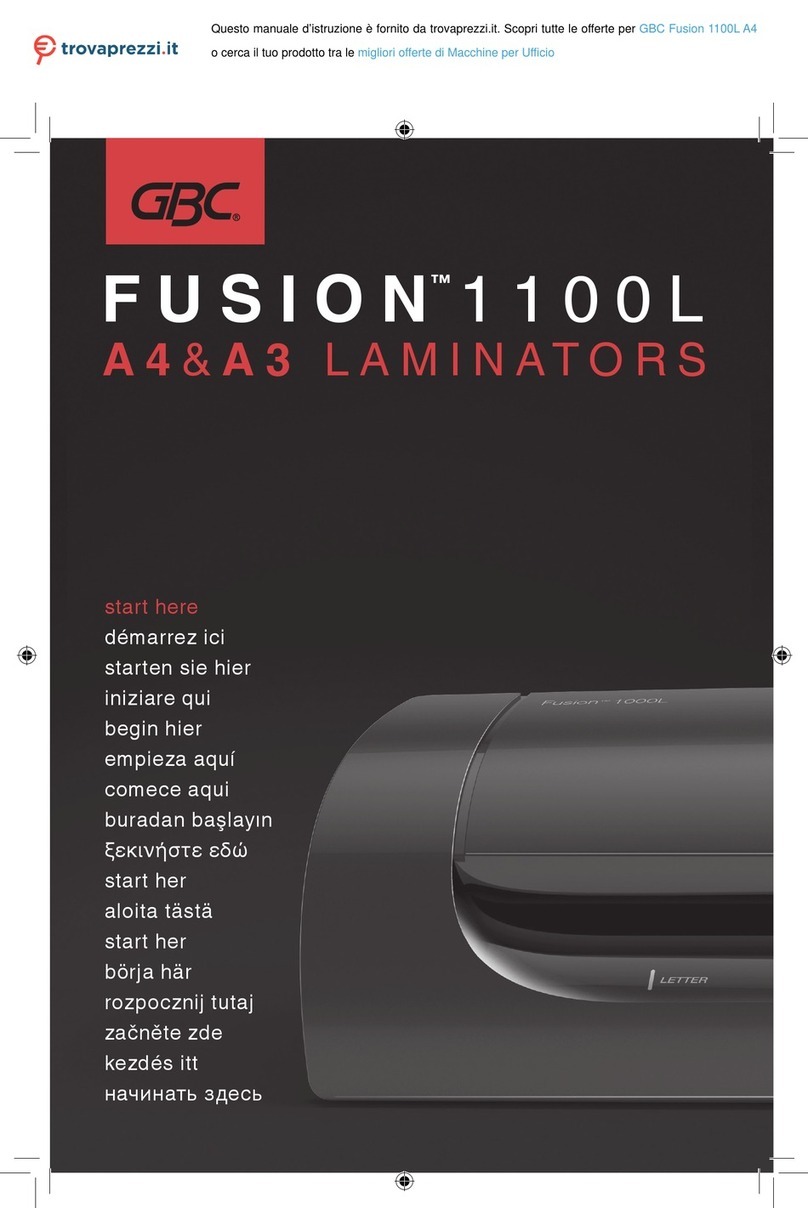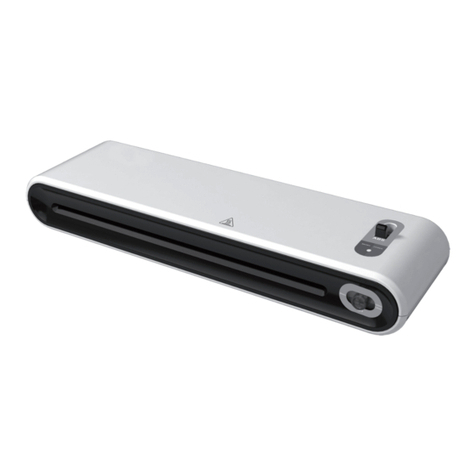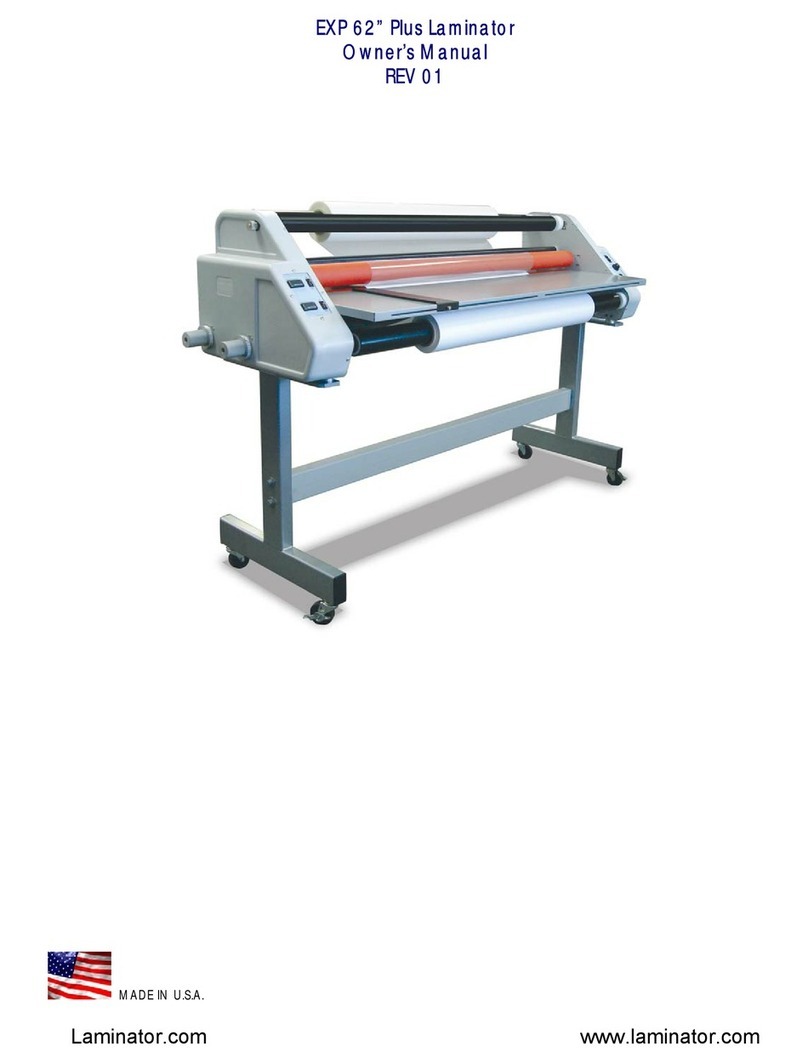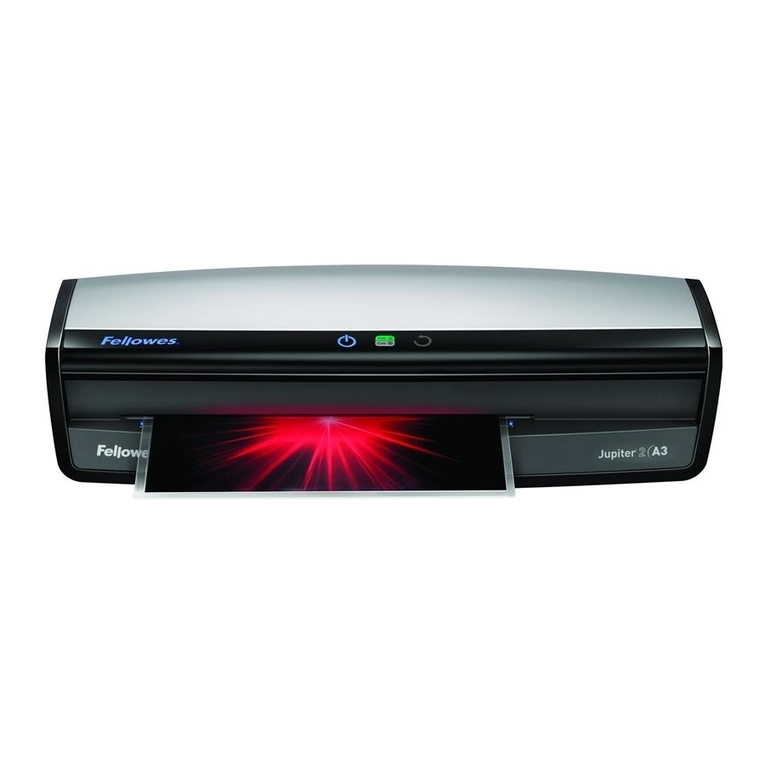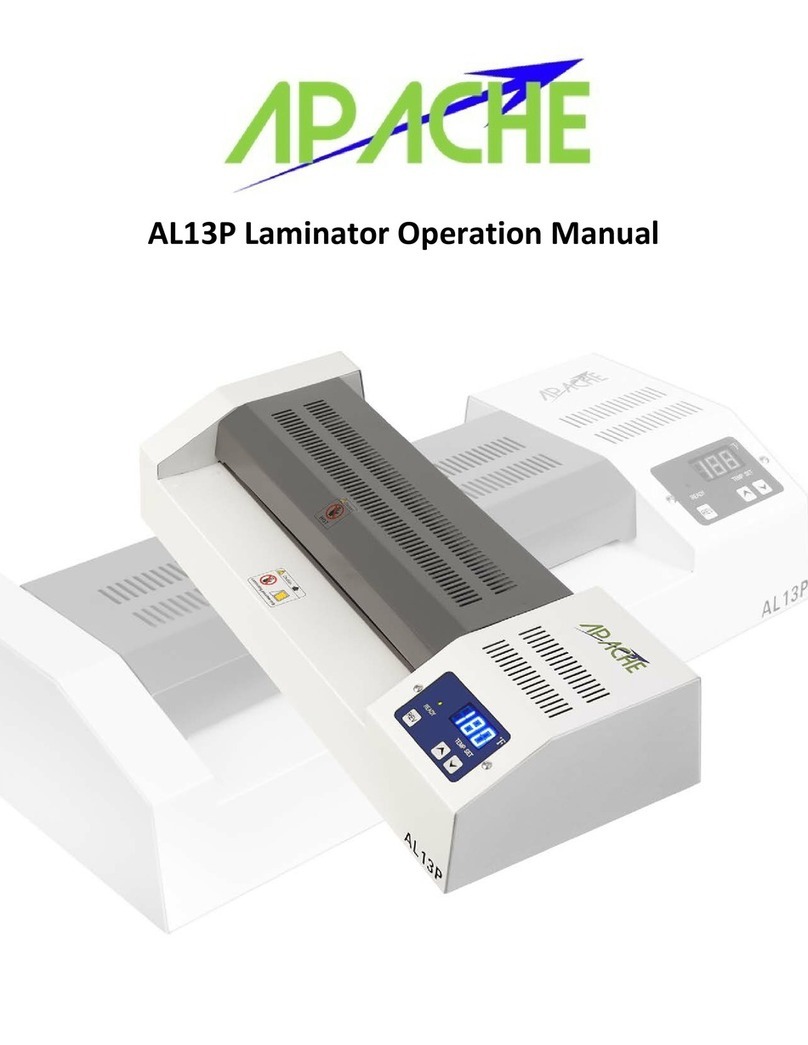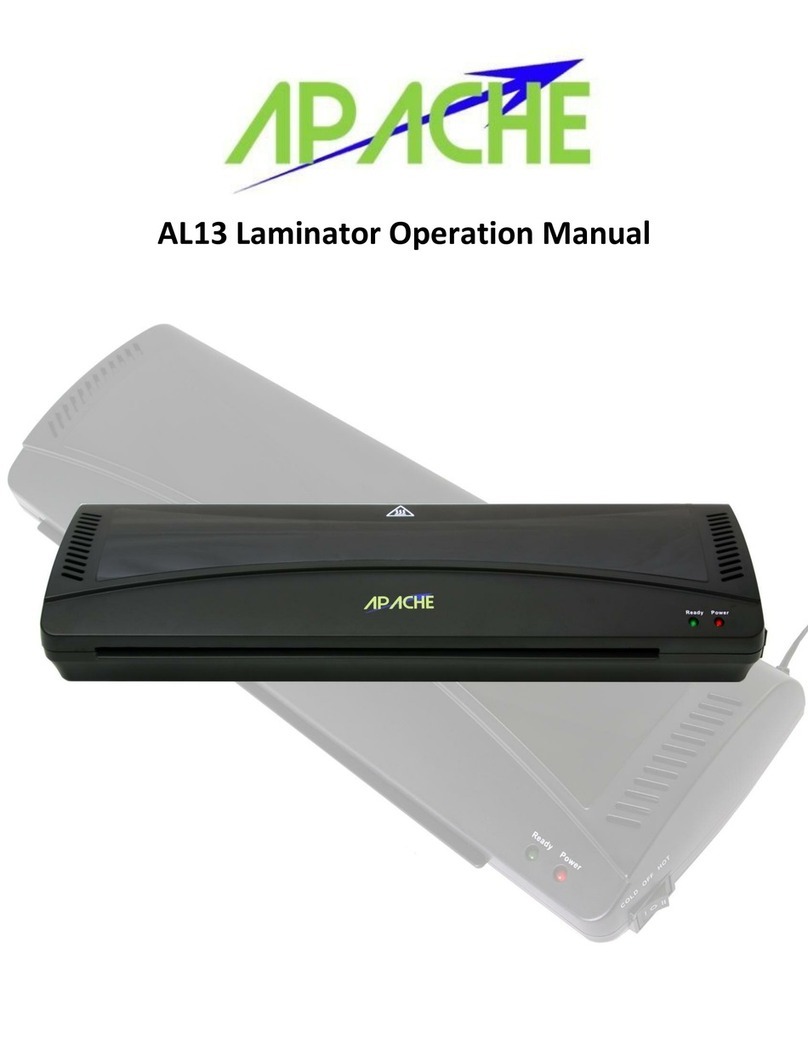Toolots FMJ-1600E-WARM User manual

Ving 63" Entry Level Full Auto
Wide Format Heat Assisted Cold
Laminator
User’s Manual
FMJ-1600E-WARM

- 1 -
I. Description
FMJ-1600-E-WARM is a new type of laminator with auto-peeling of liner
paper and print take-up function based on the FMJ-1600-II-Warm. It is simple
in structure, rational, user-friendly and low in cost. The top and bottom rollers
are driven by the motor while the film mandrel and liner paper roll are driven by
its own material, that is the straight internal force motion of the printed picture
between the main rollers. It saves labor power and easy to operate. Due to its
innovated structure, it is popular among users since its launch.
The machine has film mandrel, S bar and prints roller to support
consecutive laminating or long picture laminating. And the auto-peeling of liner
paper and print take-up are achieved by the rolling force of the main rollers. It is
easy to use, efficient, energy-saving and easy to regulate the velocity.
It has two types of mains values, 220-240VAC or 110VAC. Please make
sure that the power indication in the machine ID label conforms to your power
supply when you buy or install the machine.
The machine has pedal switch. You can use either hand switch or pedal
switch to operate.
II. Specifications
Maximum Laminating Width: 1600mm (63")
Maximum Laminating Thickness: 35mm (1.4")
Laminating Speed: 0 - 6m (236") / min
Forward / Reverse: Yes
Foot Pedal: Yes
Roller’s Diameter: 120mm (4.7")
Maximum heating temperature: 60 degree, 140F
Heating Mode: Upper roller heating
Motor power: 90W
Heating Power: 1300W
Rated Power: 1400W
Auto rewind liner pickup: Yes
After Laminating Pickup: Yes
Emergency Stops: Yes
Safety Photocell: Yes
Media Core Size: 3"
power supply: AC 110V - 240V, 50Hz or 60Hz
1N/PE 220V 7A; 1N/PE 110V 13A

- 2 -
III. Parts identifications
Figure 1
1. Left cabinet 2. Emergent stop 3. Left bracket plate 4. Liner paper roll 5.
Film mandrel 6. roller 7. Right bracket plate 8. Right cabinet 9. In-feed
table 10. Lift knob 11. prints roll 12. Base plate 13. Pedal switch 14.
castor 15. Underframe 16. Damping knob
1. Circuit breaker
2. 2. Power wire
3. Pedal switch plug-in
1
2
3

- 3 -
Control Panel:
-Power on/off:Press the button to turn on or turn off the machine.
When the machine is turned off, the motor and electricity heating
will shut down automatically, the roller will be lifted automatically.
F/R-Direction Switching Button:
Control the rotation direction of the
roller.
-Motor on/off:Start or stop the motor
-Heating Button: Start or stop the heating
function.
1)Temperature setting: Pressure the up
or down button to set the
temperature of the roller.
6 seconds after setting the actual
temperature will be displayed.
Figure 2
Specifications setting:Press and hold:“”for 3 second to enter in the
specification setting;
Press to show D-1, D-2, D-3, D-4, D-5 in order.;
END to indicate the end of setting;
Press up and down button to regulate the value of specification;
If the buttons are not pressed in minute, the specification setting
state will be automatically ended.
Spec. No.
Spec. Content
Temp. Range
Default Temp.
D-1
Temp. Correction
-100---100
0 ℃
D-2
High temp. alarm
point
10-170C
150 ℃
D-3
Max. temp.
10-150
120℃
D-4
Temp. unit
0-℃, 1-℉
0-℃
END
Setting completed
Installation Warnings:
1)Pressure transducer debugging: When the upper roller touches the down roller,
observe the temperature increase display, regulate the position of the transducer to
reach the value of the lifting height to (). Then fix the position of the transducer.

- 4 -
2)When install the upper and down limit, do not confuse the wire number.
3)Fix the film panel first and then test the button, or else the bulb and cable lines may
be damaged.
V. Installation and operating
1. Move the machine to its final location, make sure it is free of any damage
and ready of all the parts and accessories.
2. Connect the machine to the mains. Check the mains values before
connecting.
3. Install the film mandrel and left and right cabinet of print roll (fasten the
screws). Make sure the ends are symmetrical. Press the start button and the
rollers are rotating. Make sure the machine run normally. Then try
lamination and check the effect and quality of lamination.
4. Film mandrel and liner paper roller can be installed or removed quickly.
three rubber strips which can be rolled are mounted on the aluminum
mandrel to lock the core of the film roll. A Bakelite knob on one end of the
liner paper roller can regulate friction to ensure the same speech of main
rollers and liner paper roller to ensure the laminating quality. Turn the knob
clockwise, damping increases. While turn the knob counterclockwise, the
damping decreases.
5. The knob on the right cabinet is for lift or drop the roller. Turn it clockwise
and the roller is lifted. Turn it counterclockwise and the roller is dropped.
When turn it counterclockwise and the top roller reaches the bottom roller,
the turning force is significantly reduced. This phenomenon is called idle
stroke. When the weight of the top roller is well-distributed on the bottom
roller, the laminating can be started. If you continue to turn the knob
counterclockwise, the pressure can be increased.
Adjust the parallelism and pressure of the main rollers::

- 5 -
Figure 3
1. Middle bracket of compression on the left 2. Left cabinet 3. Compression
spring 4. Upper compression bracket 5. Compression bolt 6. Compression nut
The alignment of the main rollers is the crucial factor to ensure the
balance of pressure and further affect the quality of lamination and the
off-tracking of image. The main rollers are well-aligned before the
shipment from factory. While violent vibration in transportation or
long-time operation may lead to the misalignment of the main rollers. You
can readjust the rollers with the following measures.
1. Reset the pressure of the main rollers
When the pressure of the main rollers is imbalanced, the image may be
mounted off track or show up wrinkles. Adjust the pressure with the
following steps.
1) Observe and record the off-tracking direction of the image, turn off the
power of the machine and remove the board of the wheel cabinet.
Caution: compared with the right cabinet, the parts in the left cabinet is

- 6 -
fewer. Please remove the left cabinet first to avoid excessive work or
damage of other parts.
As the figure shown above, the middle bracket of the left compression and
the upper compression bracket are connected by two bolts. Each bolt has a
spring and two screws (see the figure above). One screw is welded with the
compression plate and the other below is movable clamp nut.
2) If the image is off-tracking on the left right of the machine, it indicates
the pressure on the left side is higher than that on the right side. Adjust the
screw bolt to reduce the deflection of the spring on it. The range of
adjustment of both bolts shall be as the same as possible.
Note: You can use a ruler to measure the height of the two bolts and make
sure they are at the same level in the adjustment.
3) If the image is off-tracking on the right side, it indicates that the
pressure on the level side is lower than that on the right side. Increase the
deflection of the spring on the two bolts then. The range of adjustment
depends on the range of off-track of image.
Caution: When the deflection of spring is adjusted, please turn the pressure
of the machine to its maximum level to ensure there is margin for the
deflection. Or else the spring may be damaged. When the left side does not
have margin, remove the right-side board to adjust the screw bolt on this
side.
4)Tighten the nuts after adjustment.
5) Install the left side board on the machine.
Adjustment principle: if the image is off-tracking to the left side, the
pressure of the left side is higher than the right side. Loosen the spring on
the left side to reduce its deflection.
1. Align the main rollers
Set the space between the main rollers to 1-2mm. Observe the evenness of space

- 7 -
by eyes (or measured by a feeler). If it is not even, record the side with small
space. Then set the main rollers to idle stroke, cut the main power, open the side
board of the wheel carbine, as the figure shows below, screw out the bolt,
increase or reduce the number of the insert plates between the lifting plate and the
compression plate (the insert plates are supplied as the accessory of the machine)
to align the main rollers and then re-install the side board.
Caution: The main rollers are aligned and fixed before the shipment from the
factory. When the image is off-tracking or other problems occur in lamination,
please check the pressure balance of the main rollers first. Only after confirming
the problems are caused by the misalignment of the main rollers, the insert plates
can be increased or reduced. Reset the pressure of the main rollers after the
adjustment.
6. Lamination process:
Figure 4

- 8 -
VI. Safety Cautions:
1. Read this manual carefully before starting the machine. Familiarize yourself
thoroughly with the structure, functioning and operation of this machine.
Observe all the warning symbols on the machine to prevent accidents.
2. The mains supply must match the type indicated on the machine
identification label. And reliable ground connection shall be ensured.
3. This machine does not have optical safety device. Do not approach the
rolling rollers to prevent injury.
4. Lift the roller after operation to prevent deformation after long-time
pressure and cut the power supply.
5. Keep distance with the rollers when cut the films or images to prevent
damage to the rollers by the edge tools. You can swipe the glue on the rollers by
cotton cloth with alcohol. You may not use organic solvent to swipe the roller or
wash the roller by water, which may lead to damage of the rubber or
short-circuit.
6. Install the machine in a dry and well ventilated environment. Make sure the
ground is free of water or moisture. Keep the machine from any inflammable
and explosive objects to prevent fire accident.
7. Check the electricity leaky of the machine and power lines regularly. If
there is any abnormal phenomena in operation, please check and eliminate
problem in time to prevent further damage.

- 9 -
Warranty Card
Model
Production No.
Buyer
Purchase time
Dealer
Tel
Notes
1. The above card shall be filled by the dealer and kept by the
buyer. Any alternation will invalid the card.
2. The standard warranty period of this machine is one year. You
can get free repair service with the warranty card within half a
year. Material and service fee will be charged after this
period.
3. Any machine damaged by improper usage may not enjoy free
repair service.
Table of contents

